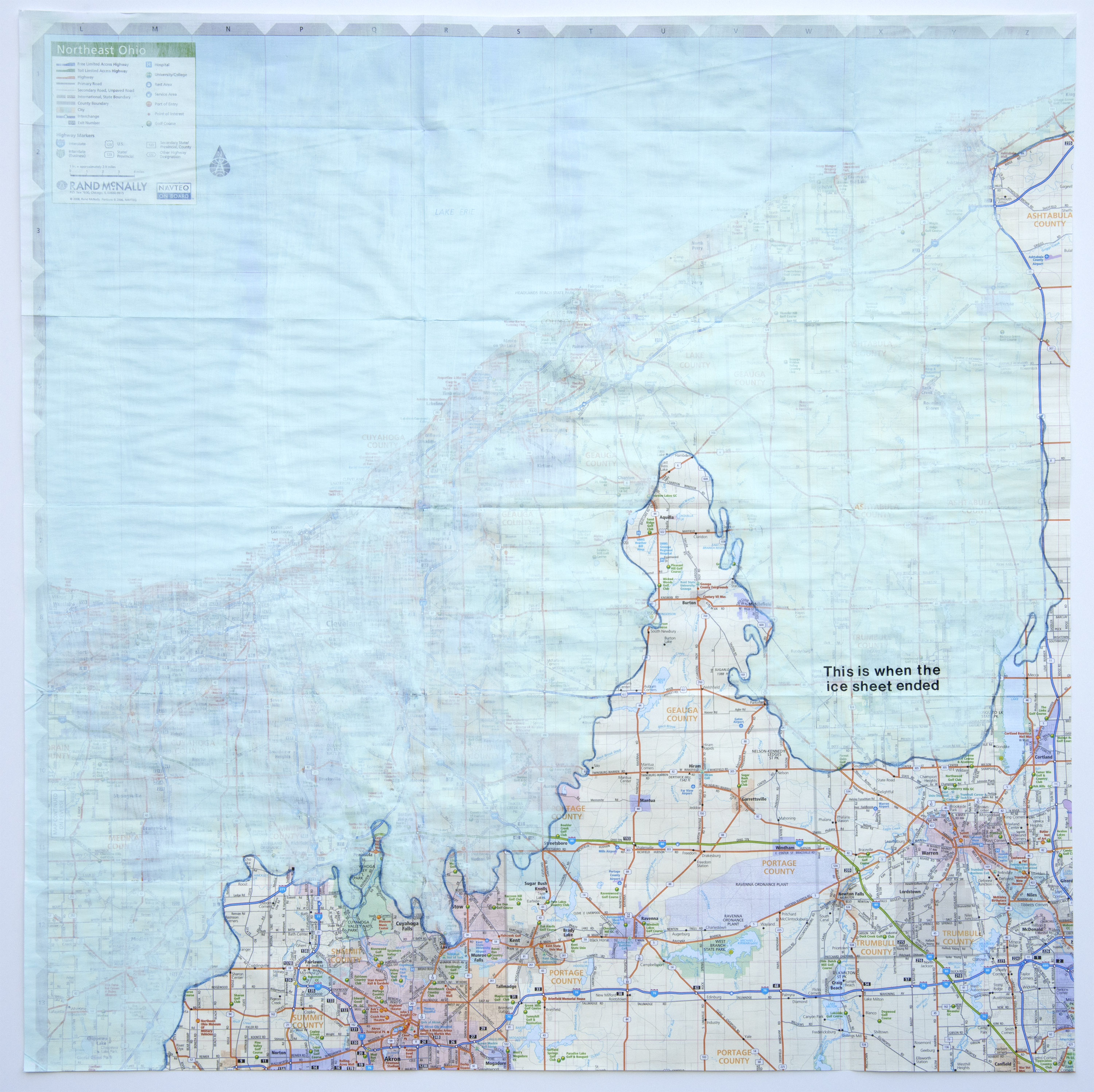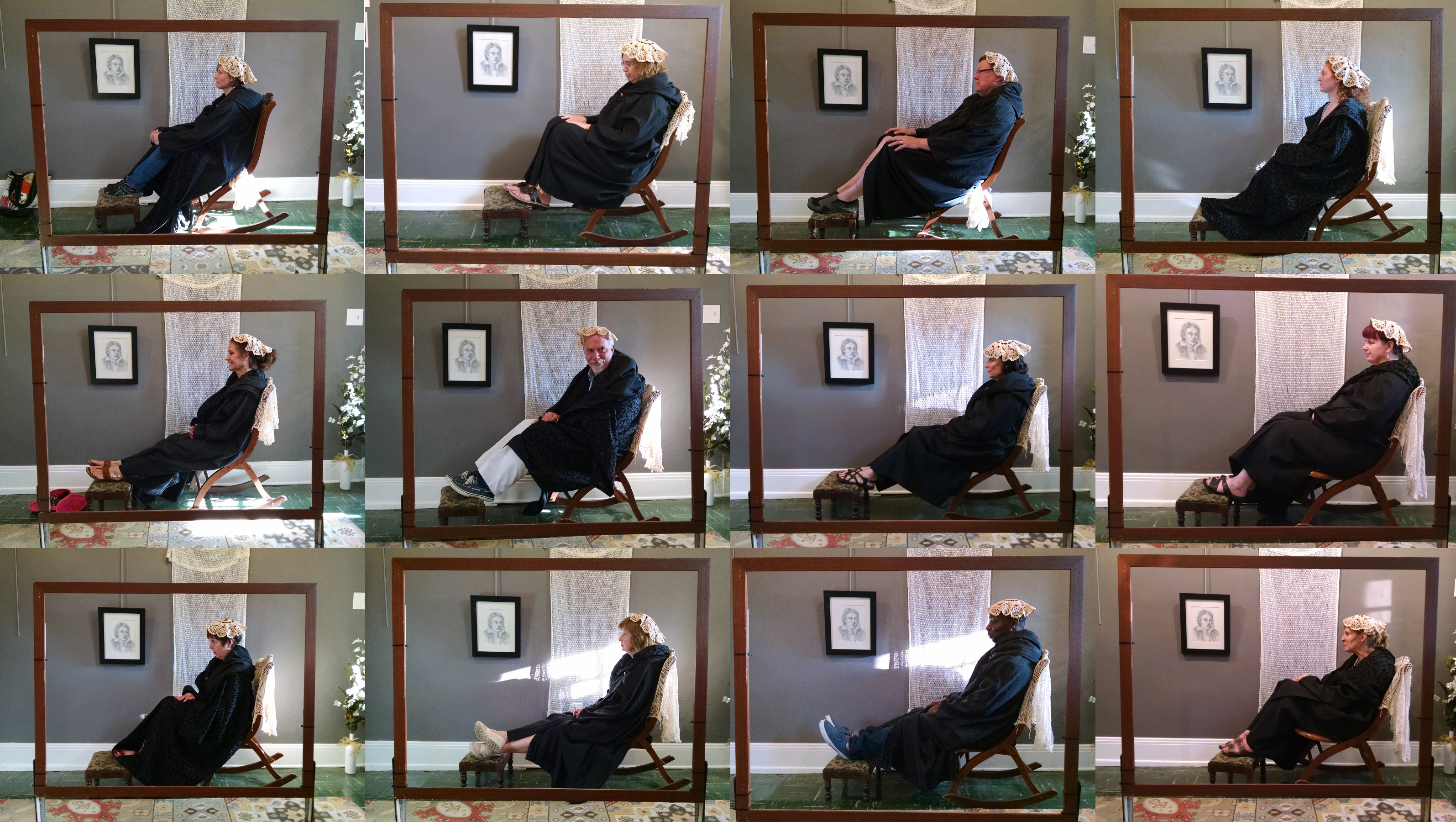By Courtney Byrnes

“No. 4 Falcieu” (1977) by David E. Davis. Mixed medium, collage. Permanent collection of Artists Archives of the Western Reserve.
The Artists Archives of the Western Reserve in Cleveland is no stranger to highlighting abstract works by Cleveland artists – particularly those of its founder, David E. Davis. His striking mixed-media collage, “No. 4 Falcieu,” is featured in “A Hard Line: Geometric Abstraction From the AAWR Permanent Collection” exhibition, on display through Dec. 16.
Several of Davis’ pieces are featured in the exhibit, along with works by other AAWR archived artists Ruth Bercaw, Samuel Butnik, George Schroeder, Susan Schroeder and Dan Tranberg. The show serves as a sister exhibit to “Tangents: Abstract and Geometric Art in Northeast Ohio,” sharing work by a range of Northeast Ohio artists who work within a non-representational style.
“No. 4 Falcieu,” with its black and gray scaled shapes and a pop of blue, has “all the right elements in the right places – color, line, composition, balance, thoughtfulness and a bit of surprise,” AAWR Executive Director Mindy Tousley tells Canvas about the artwork and what influenced it.
CANVAS: What was happening in the art world, or locally, at the time of the piece’s creation that may have influenced it?

TOUSLEY: The influence of abstract expressionism was waning, and also the influence of the ‘Cleveland School’ artists was giving way to a new generation of artists and teachers at the Cleveland Institute of Art. Certainly Julian Stanczak was beginning to be a major influence for the younger artists of Cleveland, and his work is of course based on his teacher Josef Albers, whose work in color theory would influence all artists. Stanczak’s work helped start the “op art” movement, and op art as well as other forms of geometric abstraction is a wonderful way for artists to explore color theory.
How does the piece fit into the exhibit, and more broadly in the scope of abstract works by Cleveland artists?
TOUSLEY: The work in the exhibit is all based on geometric abstraction, and this particular work certainly falls within that category. Davis was part of a group of artists, all geometric abstractionists, whose work helped resuscitate Cleveland’s aesthetic during the period from 1973 to 1981. The “Harmonic Forms on the Edge” exhibition brought them together into one exhibition. And so, the works of Samuel Butnik and Davis, who were a part of that exhibition, are included in “A Hard Line” to show the continuity between past and present, and bridge the gap between this exhibition and “Tangents,” which focuses mainly on the next generation of artists following in the footsteps of the history of the style.
Davis always insisted that for him, art must involve discipline and logic, and his work was largely based on a logically designed geometric grid. He took a rational approach to life as well as art, and so this type of style suited his personality.
What else can you tell us about the artist?
TOUSLEY: Davis was a sculptor of note who began his own art career later in life. Among his many accolades, he was a Cleveland Arts Prize winner who also was a visionary with regards to what the artists of Northeast Ohio needed. He founded both The Sculpture Center and the Artists Archives of the Western Reserve. The Sculpture Center was formed to help emerging sculptors in their careers, and the Archives was started to help preserve the legacies of aging artists and give them a way to take charge of their estates before they passed. It is remarkable to me that one man could have such insight, and fortuitous that he and his wife had the means to be so generous with their own estate – that they could form a family foundation, The David & Bernice Davis Art Foundation, the DAF, to support the work he started after he himself had passed. Both organizations are still on the land that is owned by the DAF, in buildings that were either built or renovated by David and Bernice, and both still benefit greatly from the support of the DAF.
What else should we know about this piece?
TOUSLEY: This piece was also chosen because it is emblematic of Davis’ mature style of work, based on his ideas of a “harmonic grid.” He defined the possibilities that he would explore in order to deliberately restrict his compositional possibilities in all dimensions. He turned to geometry to devise a grid that was very carefully controlled mathematically and based his subsequent work in sculpture on this grid. “No. 4 Falcieu” is one of a number of collage works that are a part of the AAWR collection, which served Davis as studies to explore the possibilities of the harmonic grid. I wanted to include a couple of the studies in the exhibition as well as a couple of sculptures, all of which are based on the harmonic grid.
ON VIEW
“No. 4 Falcieu”
Artist: David E. Davis
Year: 1977
Details: Mixed medium, collage. Permanent collection of Artists Archives of the Western Reserve.
Find it: On display as part of “A Hard Line: Geometric Abstraction From the AAWR Permanent Collection” exhibition running through Dec. 16 at AAWR, 1834 E. 123rd St., Cleveland.
Events: Jennifer Omaitz’s curator talk from 1 to 2 p.m. Dec. 2. For more information and to register, visit bit.ly/3QxmwRl.










